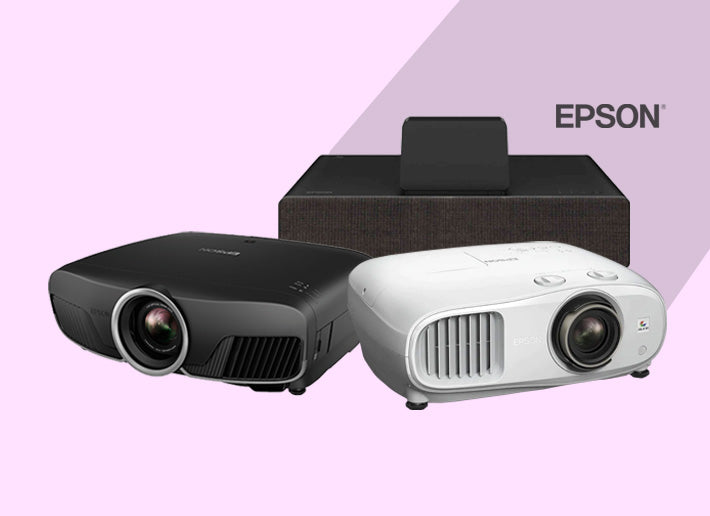When it comes to judging the sound quality of a loudspeaker, impedance is one of the many variables at play. Impedance matching may not be the most stringent process for home audio, but when it comes to pro audio, the speaker's impedance needs to be factored in.
What is Impedance, for the uninitiated?
If you’re scouting for good speakers and are looking at the tech specs, you’ll notice that most speakers are rated between 4 and 8 Ohms. Now, for the uninitiated, let’s shine some light on loudspeaker impedance, before deep-diving into helping you decide a clear winner-speakers at 4 Ohm Vs. 8 Ohm.
When we talk about a speaker’s impedance we are talking about electrical resistivity, also called electrical resistance. The measuring unit of impedance is Ohms.
Check Out:- Home Theatre Speakers
In-home audio, most used AVRs, and integrated amplifiers support both 6 and 8 Ohms speakers. These numbers are the choice of specs for most OEMs during the manufacturing process of their speakers, as the end-user will use their speaker with the widely available electronics in the market.
The challenge arises when the speaker's impedance is 4 Ohms or lower. If the amplifier does not support 4 Ohms load or lower, then there is a high risk of damaging the amp.
Failure to match speaker and amplifier impedances can damage the amplifier's circuits and result in high distortion and poor sound quality. Clearly, a dampener for the cine-buffs or audiophiles, whose lives are deeply intertwined with movies, music, or gaming.
Is Any Particular Impedance Good or Bad?

Now before you find yourself zoning out, or getting drowned with the impedance specifications, here is a simple analogy to help you understand the significant reasons for impedance variance.
Consider your speaker as a shower hose for a rain dance party. You go out and buy the best possible model with the maximum number of holes, make sure that the product is made of high-quality materials, and ensure that the spread of water will be wide and the performance will be something you shall enjoy when used.
In the same way, when one buys a speaker they make sure the drivers and tweeter are good, the cabinet is made of top-notch wood, they ensure it fills their room and that they like the sound performance that reverberates.
Now coming back to the rain dance party where the shower hose is ready and your tank is full of water and has an attached motor. In the case of audio, your tank and pump become your AVR / amp. Now the rain dance party is about to start and you attach a slim pipe from the tank to the shower hose. This slim pipe will ensure that the water will reach the hose smoothly without putting any load on the pump. Just like connecting your AVR / amp to a 6 or 8 Ohms speaker.
Now if you were to attach a thicker pipe to this mix, it would ensure that a higher quantity of water would reach the shower hose, but it won't come with a lot of force as the effect of the pump is weaker. Thus we will end up with a low output. So basically consider 4 Ohms as a thick pipe and 6/8 Ohms a slim pipe for sound. The quantity of water is the current that goes from the amp to the speaker.
Impedance is inversely proportional to power flow. As the load/impedance goes down power flow increases (pipe becomes thicker) but this means your amp now needs to have the ability to push more power.
This example can also be narrated in a highway example with more or less number of drive lanes. So no impedance is bad, it’s just the resistance the speaker has to power flow.
Is there a Clear Winner?

Let’s cut some corners and quickly answer the question — is 4 Ohms better than 8 Ohms?
The answer generally is yes, but it mostly depends on your ability to drive 4 Ohms speakers properly! Also, no home sound system is immune to impedance issues.
As explained 4 Ohms speakers need a very powerful amp that is capable of pushing a 4 Ohms load. Therefore the speaker manufacturers tend to use a 4 Ohms resistance only in their top-end or flagship models (which are obviously expensive). 4 Ohms speakers give an incredible boost in performance and very natural sound with an extremely low distortion (provided the amp is equally good).
Now to take an example, a leading company like Dynaudi makes 4 Ohms speakers which produce stunning sound only when connected to good and power amps like Accuphase, Rotel, Hegel, or Macintosh.
Shop for:- Power Amplifiers
Besides, the other important aspect is sensitivity. A higher Ohm speaker with higher sensitivity will be as effective as a lower ohm speaker.
Finally, choosing the right impedance
If your budget is tight, and you are offered a choice of 8 Ohms, 6 Ohms or 4 Ohms, stick to 6/8 Ohms speakers. It is a better idea to go for higher impedance speakers like 8 Ohms so that the AVR would not be overburdened.
We have just scratched the surface here, but hopefully, these insights on the importance of impedance in audio and video systems will help you make the decision about choosing the right impedance and steer clear from picking the “best mismatch”.









